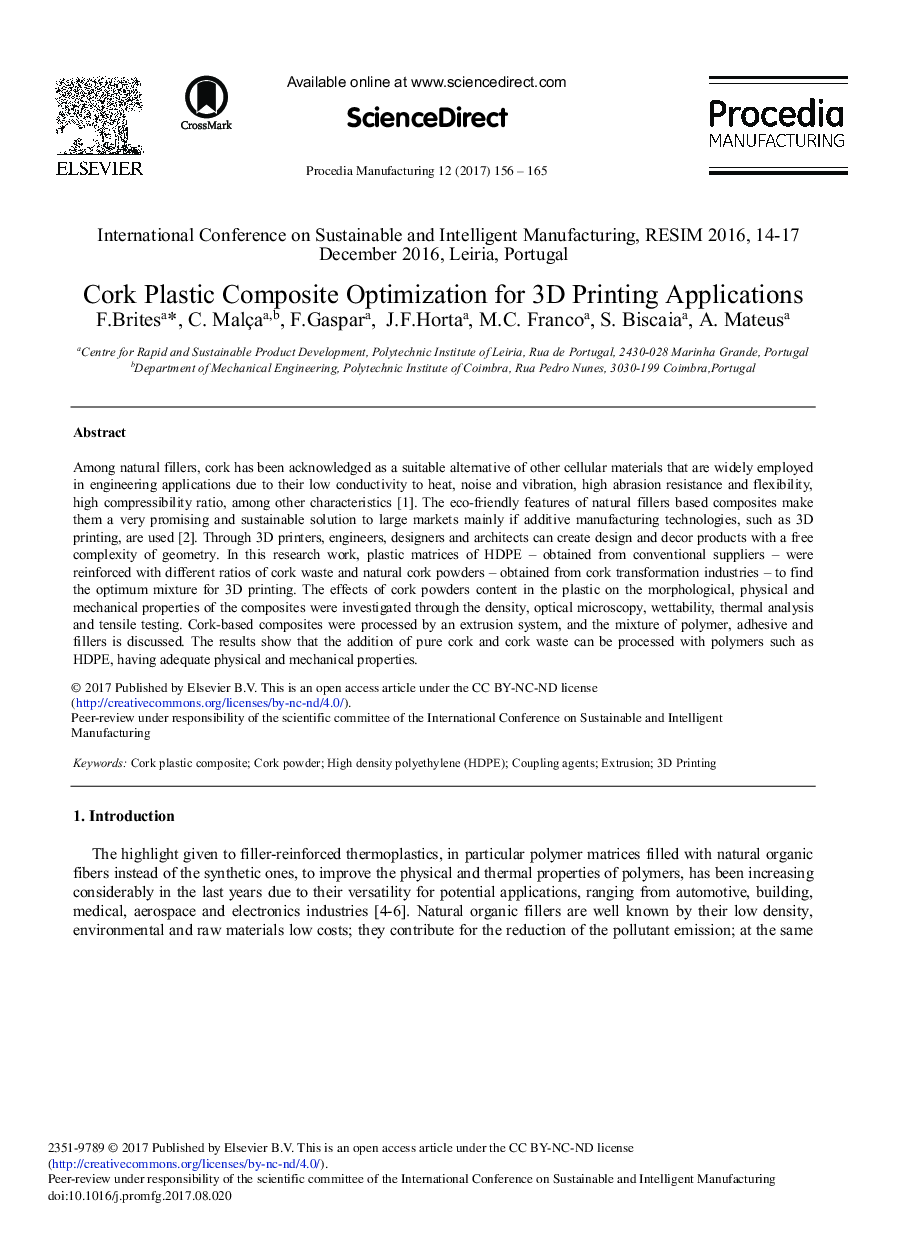| Article ID | Journal | Published Year | Pages | File Type |
|---|---|---|---|---|
| 5128623 | Procedia Manufacturing | 2017 | 10 Pages |
Among natural fillers, cork has been acknowledged as a suitable alternative of other cellular materials that are widely employed in engineering applications due to their low conductivity to heat, noise and vibration, high abrasion resistance and flexibility, high compressibility ratio, among other characteristics [1]. The eco-friendly features of natural fillers based composites make them a very promising and sustainable solution to large markets mainly if additive manufacturing technologies, such as 3D printing, are used [2]. Through 3D printers, engineers, designers and architects can create design and decor products with a free complexity of geometry. In this research work, plastic matrices of HDPE - obtained from conventional suppliers - were reinforced with different ratios of cork waste and natural cork powders - obtained from cork transformation industries - to find the optimum mixture for 3D printing. The effects of cork powders content in the plastic on the morphological, physical and mechanical properties of the composites were investigated through the density, optical microscopy, wettability, thermal analysis and tensile testing. Cork-based composites were processed by an extrusion system, and the mixture of polymer, adhesive and fillers is discussed. The results show that the addition of pure cork and cork waste can be processed with polymers such as HDPE, having adequate physical and mechanical properties.
